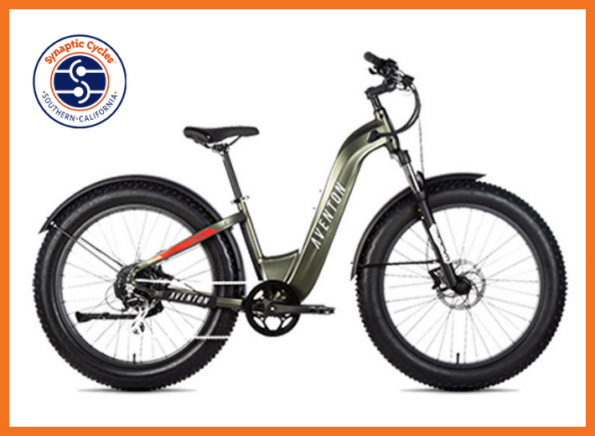“We know that physical activity reduces the risk for multiple diseases including cardiovascular disease, cancer, and diabetes—and the intensity of physical activity during e-cycling is sufficient to provide these health effects,” says Amund Riser, a co-author of supportive research and an exercise science instructor and research program manager at the Western Norway University of Applied Sciences.
Of course, it matters how one uses an e-bike as there are different classes and assistance levels to choose from. Class 1 e-bikes are the most popular and require the rider to pedal before the motor kicks in. Pedal-assist levels usually range from one to five and can also be turned off completely. Class 2 e-bikes work the same way, but they also offer a throttle-power mode on the handlebars to allow movement without pedaling. This mode is usually only activated by riders to get heavy e-bikes going or up hills, however, as research shows that e-cyclists are physically active for at least 95 percent of each ride.

Regardless of make or model preferences, e-bike use is growing at a fast pace across the world. Data from the United States Department of Energy shows that in 2019, 287,000 e-bikes were sold in the United States. In 2022, the number rose to 1,100,000. And America isn’t even the world’s top e-bike market. Germany, France, Italy, Austria, and the Netherlands all have more e-bike riders per-capita. In Switzerland, one in every seven bikes sold is an e-bike; and in many places in China, there are more electric bikes on the road than cars.
“There’s strong evidence that e-bikes will continue to become an increasingly popular and important part of our transportation and recreation landscape,” says Chris Cherry, a professor of civil engineering at the University of Tennessee at Knoxville and co-author of many supportive studies.
This undoubetdly excites e-bike manufacturers, but it’s also good news for millions of e-cyclists who reap the health benefits of riding regularly.
Physical benefits for e-bikers
Frequently hopping on an e-bike can help reduce obesity risk and related disease, improve heart rate, grow and tone muscle mass, and increase lung capacity by providing maximal oxygen consumption—known as VO2-max.
“Your muscles’ demand for oxygen increases as you pedal,” says Aslak Fyhri, chief research psychologist at the Institute of Transport Economics in Oslo, Norway. To meet this demand, he explains, the heart pumps more blood, breathing intensifies, and one’s lung capacity increases.
E-bikes can also strengthen both lower body muscles through pedaling and upper-body muscles through gripping handlebars, maintaining an upright position, and balancing. Though such muscle growth also happens when cycling, the fact that e-bikes are two to three times heavier than traditional bicycles means muscle growth can be greater—so long as the rider isn’t relying on high levels of electrical assistance.
A noteworthy meta-analysis also shows e-biking improving aerobic fitness, which is an important predictor of health and longevity.
Studies also have shown that e-biking can help manage healthy blood sugar levels, positively affect one’s BMI, and be “a terrific low-impact exercise that’s easy on your joints,” says David Bassett, a kinesiologist and professor emeritus of exercise physiology at the University of Tennessee at Knoxville. He says pedal-assist cycling also has been shown to improve one’s blood pressure by reducing mean arterial pressure.
Indeed, the cardiovascular and respiratory benefits of e-cyclists closely match those of traditional cyclists. Demonstrating this, researchers in the department of public health at Brigham Young University in Utah found that when they compared the heart rates of participants who rode e-bikes with the heart rates of people who rode traditional bikes, both groups ranked in the “vigorous-intensity heart rate zone.” Other studies have reached similar conclusions and additional research shows that maximal oxygen consumption ranges between 51 and 73 percent for e-bikers and 58 percent and 74 percent for traditional cyclists.
“There is a large body of research suggesting that e-cycling can be considered a moderate-to-vigorous intensity activity across a range of physiological markers of fitness including energy expenditure, maximum oxygen update, metabolic equivalents and more,” says Jessica Bourne, co-author of related research and an exercise, nutrition, and health sciences researcher at the University of Bristol in the United Kingdom.
E-bikes may even be superior to traditional bicycles in at least one way: research shows that e-bikers are more likely to ride them more often and for farther distances—even as much as 50 percent further. “Conventional bicycles require higher levels of physical effort to ride, but because of that, people ride them fewer minutes per week,” says Cherry.
Mental health benefits to boot
Beyond being good for the body, a number of qualitative studies show that e-bike riders consistently report improvements in their mental health as well. These benefits include stress reduction, improved sleep, and increased levels of happiness. Riiser says the release of feel-good hormones such as endorphins and serotonin that are associated with cardiovascular exercise like cycling can further improve one’s mood and quality of life.
 Combine fun and fitness with an eBike rental. Discover the scenic trails and coastal paths that wind through Dana Point on a bike. Call us today at 949.484.6409. Remember to follow us on Instagram @synapticcycles.
Learn more about our eBikes here! You have many options which you can purchase your new eBike from! Instead of purchasing directly from the manufacturer, or an electronic store, surf shop, or perhaps even Costco — why not purchase directly from the experts — US. You can turn to us whenever technical support is needed, as we are the eBike professionals with a full-service department, and you will receive priority service at all times!
Combine fun and fitness with an eBike rental. Discover the scenic trails and coastal paths that wind through Dana Point on a bike. Call us today at 949.484.6409. Remember to follow us on Instagram @synapticcycles.
Learn more about our eBikes here! You have many options which you can purchase your new eBike from! Instead of purchasing directly from the manufacturer, or an electronic store, surf shop, or perhaps even Costco — why not purchase directly from the experts — US. You can turn to us whenever technical support is needed, as we are the eBike professionals with a full-service department, and you will receive priority service at all times!
Reference: [https://www.nationalgeographic.com/premium/article/e-bikes-popular-health-benefits-heart-muscles]


















